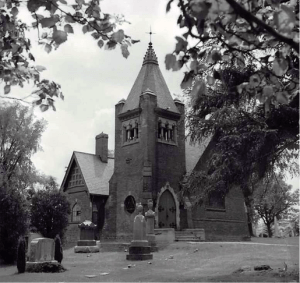
St. Phillip’s Churchyard was formally consecrated in 1841 by the Right Reverend John Strachan, Bishop of Toronto. However, there is evidence from parish records and tombstones that burials occurred much earlier.
In the fall of 2018, the Weston Historical Society invited Westonians to gather in the grounds of the cemetery to learn more about its rich history and listen to fascinating stories told by the families who lived and died in this area about 200 years ago.
In the early 1800s, a group of pioneer families settled in a small village along the banks of the Humber. They were farmers and millers, trades and business people, merchants and bankers, doctors and politicians, who came with their families to the new town of Weston.
In 1828, two local tavern keepers, Edward and Thomas Musson, donated a parcel of land to accommodate a church and cemetery. In 1857, Thomas Musson and his wife Ann Smart gave additional land to the church to enlarge the cemetery. Thanks to the generosity and dedication of families like the Mussons, Wadsworths, Grubbs, and others, St. Philip’s Church and Churchyard were quickly established on the west side of the Humber River.
The original part of the churchyard was laid out in a grid pattern with drives and walks to separate the tiers of burial lots. Unfortunately, most of this pattern is no longer visible today.
The many markers dated 1835 to 1842 are a reminder of the diphtheria and smallpox epidemics, which caused so much death during those years. In 1841, 26 parishioners died, 15 of them children. And another nine died in early 1842.
In 1935 William Rein Wadsworth offered, for one dollar, the parcel of land that lay between St. Phillip’s Churchyard and Dixon Road to enlarge the cemetery. This land was consecrated in 1953 by Bishop Beverly and is still referred to as the “Wadsworth Annex”.
In 1993, the
central corridor of the cemetery was restructured with pathways, making the
grounds more inviting to visitors to meander through this historic site.
St. Philip’s Cemetery is the final resting place for the following prominent Canadian:
Doug McNichol
Professional football player, CFL, 1953 – 1963